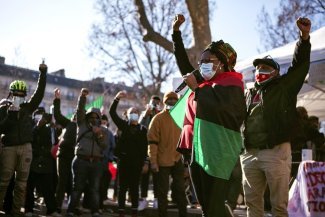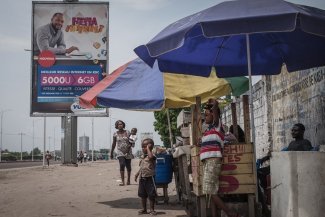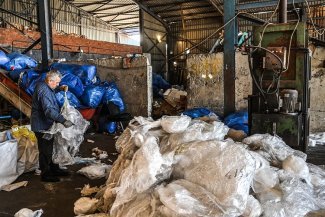They counted some 1300 m3 of wood, of which 71 per cent was sourced illegally. The equivalent of sixty truckloads. Worth over €400,000 (US$447,000).
The seizure of a cargo of illegal wood headed for the United States and Mexico, carried out in November 2015 by the organisation in charge of supervising forestry resources, OSINFOR, was historic. It was the biggest seizure in the country’s history, according to the Peruvian press.
One man in particular was behind the success of the operation: Rolando Navarro, executive president of OSINFOR and a “key figure in the fight against illegal logging”.
To everyone’s surprise, however, the government decided on 15 January not to renew his mandate. It is a decision that has left specialists astounded and perplexed.
Some believe Navarro is paying the price for having used, for the first time ever, Legislative Decree 1220, which in addition to declaring the fight against illegal logging a matter of national interest, provides for the seizure of illegally sourced wood.
Ever since it was passed, however, the decree has roused opposition. Loggers’ associations complain they are being likened to drug traffickers and that jobs are being threatened in the region. To make their voice heard, they are stepping up their protests, by organising pickets and roadblocks.
At the same time, the political pressure is growing ever stronger. Several Members of Congress have introduced bills aimed at reducing the impact of the decree.
“Removing Rolando Navarro from office is also an attack on all those fighting against this scourge in our country, and sends out a message to all public officials that they should not try to stop the illegal logging mafia,” points out Julia Urrunaga, head of the Environmental Investigation Agency in Peru.
Two per cent of Peruvian forest cover destroyed in 10 years
Yet the 113,000 hectares of forest destroyed each year between 2000 and 2013 means the problem should be a priority for the Peruvian state.
Peru’s forest cover was estimated at 73 million hectares in 2011. Every year, therefore, 0.15 per cent of Peruvian forest is destroyed. That is, just over two per cent since the year 2000.
On a visit to the United States, Pedro Cateriano, president of the Council of Ministers reaffirmed Peru’s commitment to the environment, driven in part by growing awareness but also the free trade treaty signed with the US in 2008. The environmental provisions of the agreement include a section specifically related to forest management.
“Peru was placed under an obligation to introduce genuine supervision, a plan to fight corruption and to increase the staff employed to fight illegal logging,” explains Julia Urrunaga.
“There is now a legal structure in Peru, laws that should allow for action to be taken. The problem is the corruption that continues to exist at all levels, from the police officer to the forestry engineer who signs the inventory,” Nelly Luna Amancio, a journalist with the investigative online news site Ojo Público and author of the revelations about the record seizure, tells Equal Times.
Since 2008, OSINFOR has revealed many irregularities by contrasting the operating reports with the reality on the ground. They would often discover that the wood’s origin had been falsified. “At the coordinates indicated, there was a field or a river... but no trees or any sign that trees had been cut there,” explains the journalist.
When questioned by Equal Times, OSINFOR alluded to a transition phase and did not wish to respond.
But in a communiqué published on its website, it denounces the “attacks aimed at devaluing the quality of the work done by OSINFOR”.
A member of an environmental NGO, who wishes to remain anonymous, told Equal Times: “There are two currents at the moment in the government and the institutions: those who want to fight against illegal logging and those who don’t want too much to be done because it isn’t good for the country’s image. The organisation has also made many enemies in the regional governments.”
The situation on the ground is increasingly complex. In November 2014, the NGO Global Witness underlined that “Peru is the fourth most dangerous country” in the world for land or environmental defenders, with 57 killings between the years 2000 and 2014.
Among them was Edwin Chota, killed along with three other members of his community in September 2014 for having fought against illegal loggers. A year and a half later and the culprits have still not been identified.









